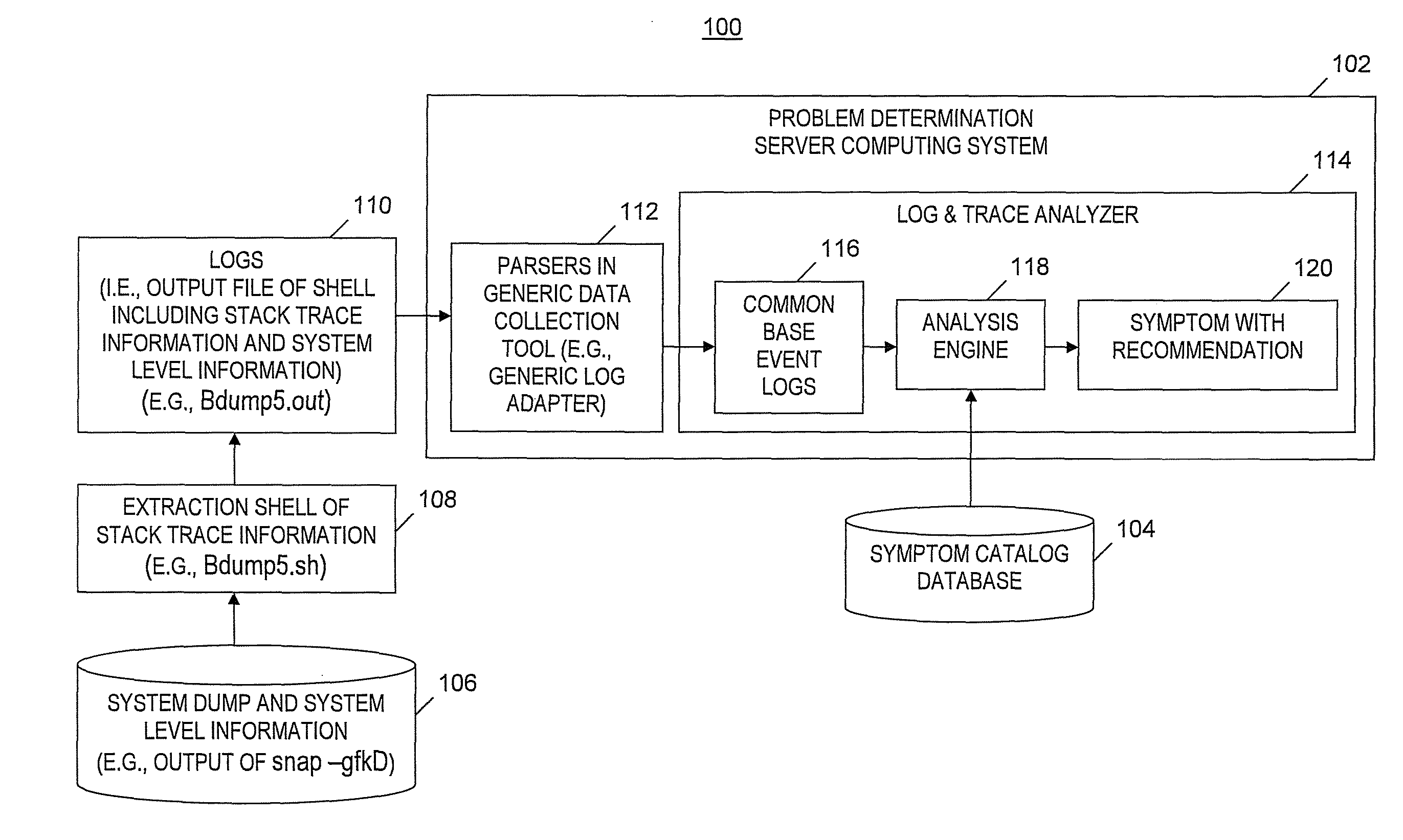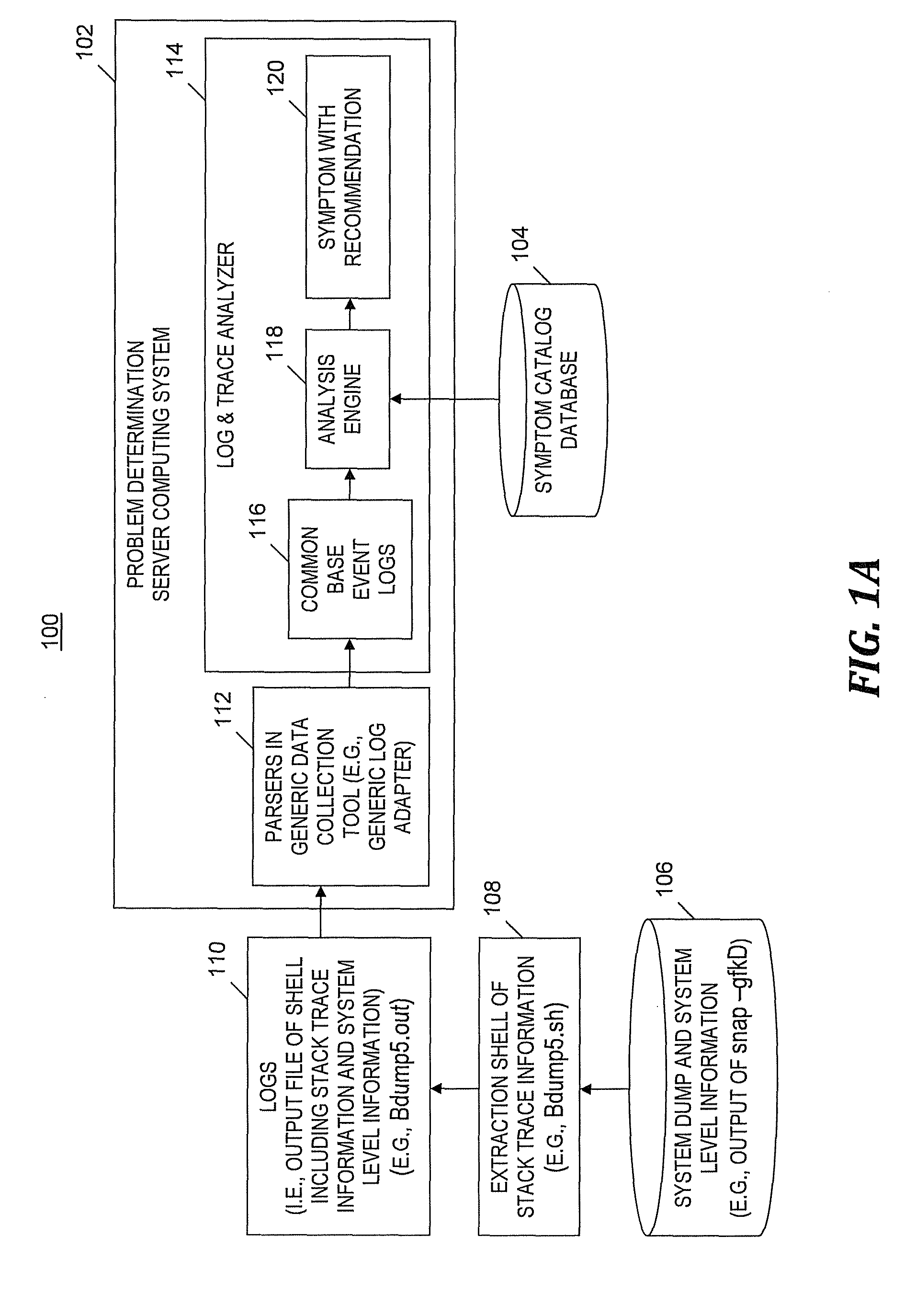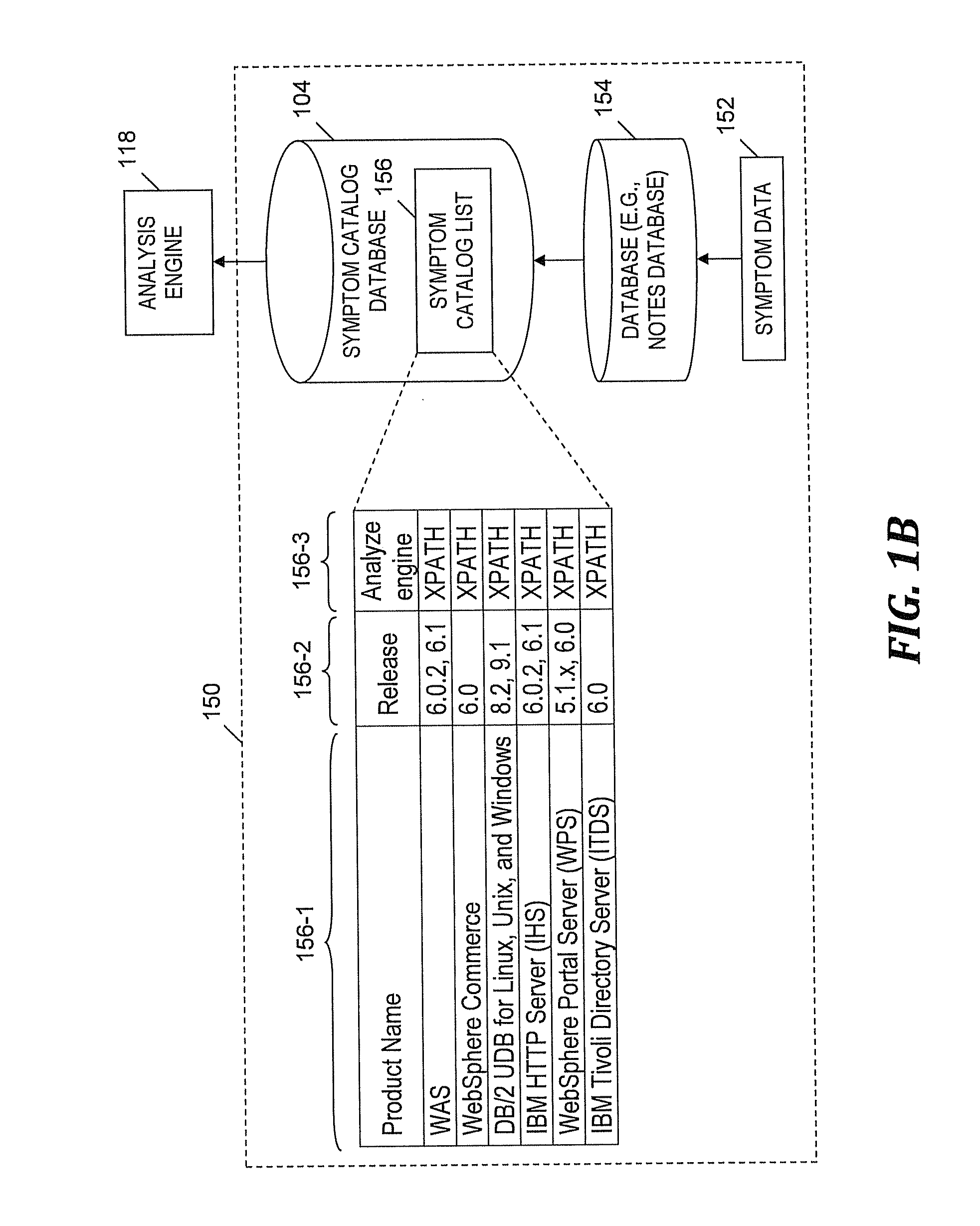Problem analysis via matching contiguous stack trace lines to symptom rules
a problem analysis and stack trace technology, applied in error detection/correction, memory systems, instruments, etc., can solve problems such as engineers waste time in conventional investigation, unsatisfactory variations in the response speed of different engineers,
- Summary
- Abstract
- Description
- Claims
- Application Information
AI Technical Summary
Benefits of technology
Problems solved by technology
Method used
Image
Examples
Embodiment Construction
[0044]FIGS. 3A-3F depict a flowchart of a problem analysis and symptom extraction process that is an example of the processes of FIGS. 2A and 2C, in accordance with embodiments of the present invention. The exemplary problem analysis and symptom extraction process begins at step 300 of FIG. 3A. In step 302, computing system 102 (see FIG. 1A) receives file Bdump5.out as input. Bdump5.out includes a stack trace, information about the stack trace and system level information. Bdump5.out is output from an extraction shell of stack trace information 108 (see FIG. 1A) (i.e., Bdump5.sh) that was derived from a set of AIX® system dump and system level information 106 (see FIG. 1A).
[0045]Unless otherwise indicated the following steps in FIGS. 3A-3F are performed by analysis engine 118 (see FIG. 1A). In step 304, a counter (i.e., StackCnt) indicating a particular stack trace is initialized to zero. In step 306, a range of the current (i.e., (StackCnt+1)-th) stack trace is identified and the n...
PUM
 Login to View More
Login to View More Abstract
Description
Claims
Application Information
 Login to View More
Login to View More - R&D
- Intellectual Property
- Life Sciences
- Materials
- Tech Scout
- Unparalleled Data Quality
- Higher Quality Content
- 60% Fewer Hallucinations
Browse by: Latest US Patents, China's latest patents, Technical Efficacy Thesaurus, Application Domain, Technology Topic, Popular Technical Reports.
© 2025 PatSnap. All rights reserved.Legal|Privacy policy|Modern Slavery Act Transparency Statement|Sitemap|About US| Contact US: help@patsnap.com



